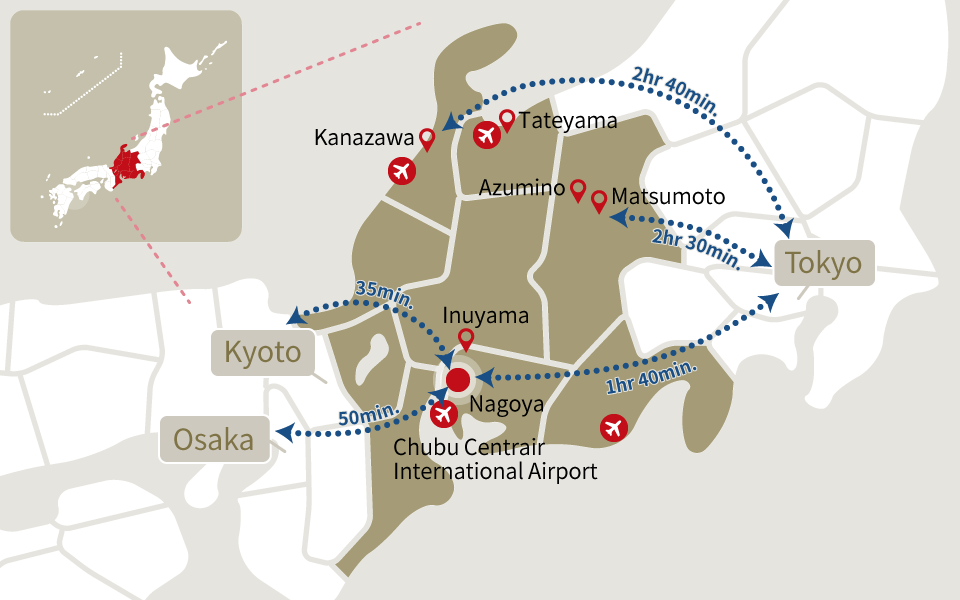Go!Central Japan × Centrip JapanStep on to the JR Shinkansen
and Back in Time on the Tokaido
Home > Go!Central Japan × Centrip Japan | Step on to the JR Shinkansen and Back in Time on the Tokaido > A Tale of Two Lakes
A Tale of Two Lakes

A Walk Along the Coast
The most important road of Japan's Edo Period (1603–1868) was the Tokaido. The government-regulated highway originally consisted of 53 post towns (corresponding to the 53 Buddhist saints that Buddhist acolyte Sudhana is said to have visited on his path to enlightenment). This road stretched from Edo (modern-day Tokyo), through Nagoya, all the way to Kyoto. Each post town along the Tokaido was a place to regulate traffic and a chance for weary travelers to rest themselves and eat. In good weather, the trip from Edo to Kyoto could be done in a week. In bad weather, the trip could take up to a month.
The numerous post towns on the Tokaido each had their own local flare. They developed unique foods and culture over the years. Travelers carried word of the different towns' interesting characteristics and guidebooks chronicling the various towns were even produced. Even in modern times, the unique culture that sprang up from this post towns remains.
There are two lakes situated near the ends of the Tokaido, Lake Hamana in the east and Lake Biwa in the west. In those days, the word umi meant "lake". Totoumi, or "far lake" was the name given to the area surrounding Lake Hamana in modern-day Shizuoka Prefecture. To someone living in Kyoto, Lake Hamana was far away. On the other end of the Tokaido, closer to Kyoto, was the area around Lake Biwa known as Oumi, or "near lake". This area became modern-day Shiga Prefecture.
Our journey down the Tokaido begins in Totoumi (Shizuoka Prefecture). We will learn about the unique food culture born out of this area, some of which is deeply tied to Lake Hamana. After that, we'll travel to Owari (modern-day Aichi Prefecture) to witness the spectacle that is sumo. From there, we'll venture into Mino (Gifu Prefecture), home of the greatest sword makers in Japan and learn about their rich tradition. Finally, we'll make our way to Oumi (Shiga Prefecture), where you'll find Lake Biwa, the largest lake in Japan, and quite possibly the oldest one on Earth. Our journey will end with a chance to explore the natural beauty of Japan's countryside.












